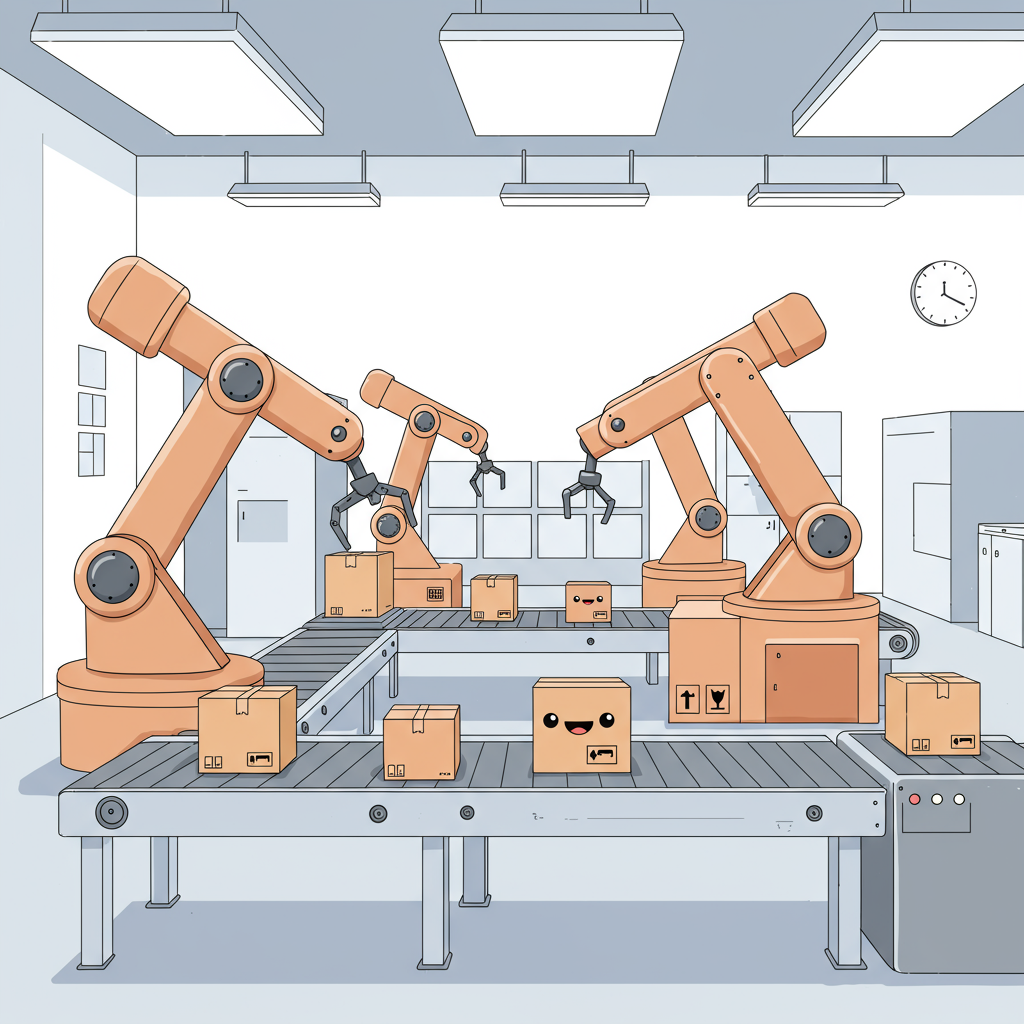Discover how to transform your e-commerce business by automating your order fulfillment process, saving time, reducing errors, and boosting customer satisfaction.
Hello fellow Shopify merchants! Today, I want to talk about something that can truly transform your e-commerce business: automating fulfillment.
As your store grows, manually handling every order, from picking and packing to shipping and tracking, quickly becomes a bottleneck.
It consumes valuable time, increases the risk of errors, and can significantly slow down your growth.
That’s where automation steps in, offering a powerful solution to streamline your operations and free you up to focus on what you do best – growing your brand.
So, why should you even consider automating your fulfillment process? The benefits are numerous and impactful.
Firstly, it dramatically increases efficiency. Tasks that once took hours can be completed in minutes, or even seconds, without human intervention.
Secondly, automation reduces human error. Fewer manual touchpoints mean fewer mistakes in order processing, inventory counts, and shipping details.
Thirdly, it saves you money in the long run. While there might be an initial investment, the reduction in labor costs and error-related expenses quickly pays off.
Fourthly, it improves customer satisfaction. Faster, more accurate fulfillment leads to happier customers who receive their orders promptly and correctly.
Finally, automation provides scalability. As your order volume increases, your automated system can handle the growth without requiring a proportional increase in manual effort.
Fulfillment isn’t just about shipping; it’s a multi-faceted process. Let’s break down the key areas where you can implement automation.
**Order Processing:** This is the initial step. Automation here means orders are automatically marked as paid, inventory is updated, and shipping labels are generated.
**Inventory Management:** Keeping track of stock levels is crucial. Automated systems can update inventory in real-time, trigger reorder alerts, and even sync across multiple sales channels.
**Shipping & Label Generation:** This is perhaps the most obvious area. Automated tools can select the best shipping rate, print labels, and even schedule pickups.
**Customer Communication:** From order confirmation to shipping updates and delivery notifications, automated emails or SMS messages keep your customers informed every step of the way.
**Returns Management:** While often overlooked, automating parts of the returns process, like generating return labels or initiating refunds, can save a lot of headaches.
Now, how do we actually achieve this automation within Shopify? You have several powerful options at your disposal.
**Shopify’s Built-in Features:** Shopify itself offers some fantastic native automation. For instance, you can set up automatic fulfillment for digital products or use its basic order status updates.
**Shopify Apps:** This is where the real power lies. The Shopify App Store is brimming with apps designed specifically for fulfillment automation.
Apps like ShipStation, ShippingEasy, or Order Printer Pro can handle label generation, rate comparison, and even packing slip creation.
For more advanced workflow automation, apps like Shopify Flow (for Shopify Plus users) or Zapier (for connecting Shopify with other services) are invaluable.
**Third-Party Logistics (3PLs):** For many merchants, especially those with high volumes or limited storage space, partnering with a 3PL is the ultimate automation solution.
A 3PL handles everything from warehousing your products to picking, packing, and shipping orders directly to your customers. They integrate seamlessly with Shopify.
Companies like ShipBob, Deliverr, or even Amazon’s FBA (Fulfillment by Amazon) are popular choices for this comprehensive service.
Before diving in, take some time to plan. What are your biggest fulfillment pain points? What processes consume the most time?
Start small. You don’t have to automate everything at once. Pick one or two critical areas and implement solutions there first.
Research apps thoroughly. Read reviews, check pricing, and look for apps that offer free trials to ensure they meet your specific needs.
If considering a 3PL, evaluate their pricing structure, integration capabilities, and their ability to handle your specific product types (e.g., fragile, oversized).
Ensure your inventory is accurate before you automate. An automated system built on incorrect data will only amplify existing problems.
Test, test, test! Before going live with any new automation, run several test orders to ensure everything is working as expected.
**Standardize your packaging:** This makes picking and packing more efficient, whether you do it yourself or a 3PL does.
**Optimize your product data:** Accurate weights, dimensions, and SKUs are crucial for automated shipping calculations and inventory management.
**Regularly review your processes:** Automation isn’t a set-it-and-forget-it solution. Periodically review your automated workflows to identify areas for further improvement or adjustment.
**Leverage analytics:** Use the data provided by your Shopify store and fulfillment apps to gain insights into shipping costs, delivery times, and customer satisfaction.
**Communicate clearly with your customers:** Even with automation, proactive communication about potential delays or issues builds trust.
While automation is powerful, it’s not without its challenges. Integration issues between different apps can sometimes arise.
Data accuracy is paramount; “garbage in, garbage out” applies here. Ensure your product and inventory data are pristine.
Over-automating can sometimes lead to a loss of personal touch, especially for niche businesses. Find the right balance.
The initial setup can be time-consuming and require a learning curve. Be patient and invest the necessary time upfront.
My advice? Start with the most repetitive, error-prone tasks. These are usually the best candidates for immediate automation.
Automating fulfillment in Shopify isn’t just about making things easier; it’s about building a more resilient, scalable, and profitable e-commerce business.
It frees you from the mundane, allowing you to dedicate your energy to marketing, product development, and strategic growth.
By embracing these tools and strategies, you can transform your operations from a manual chore into a smooth, efficient machine.
I truly believe that for any serious Shopify merchant, fulfillment automation is no longer a luxury but a necessity.
**What do you think about this article? Did I cover everything you wanted to know, or do you have further questions?**
I hope this guide has provided you with a clear roadmap to begin your journey towards automated fulfillment. Happy selling!






